Potrebujeme váš súhlas na využitie jednotlivých dát, aby sa vám okrem iného mohli ukazovať informácie týkajúce sa vašich záujmov. Súhlas udelíte kliknutím na tlačidlo „OK“.
ASTM A627-03(2011)
Standard Test Methods for Tool-Resisting Steel Bars, Flats, and Shapes for Detention and Correctional Facilities
Automaticky preložený názov:
Štandardné skúšobné metódy pre Tool odolné oceľové tyče, bytov a tvary pre zadržanie a nápravných zariadení
NORMA vydaná dňa 1.7.2011
Informácie o norme:
Označenie normy: ASTM A627-03(2011)
Poznámka: NEPLATNÁ
Dátum vydania normy: 1.7.2011
Kód tovaru: NS-3431
Počet strán: 11
Približná hmotnosť: 33 g (0.07 libier)
Krajina: Americká technická norma
Kategória: Technické normy ASTM
Kategórie - podobné normy:
Anotácia textu normy ASTM A627-03(2011) :
Keywords:
correctional facility, cutting test, deflection test, detention facility, drop-weight test, physical security, security, security grades, steel bars, tool resistance, tool-resisting steel bars: Cutting resistance, Deflection--building constructions/materials, Drop tests, Drop-weight test, Homogeneous steel bars, Performance--metals/alloys materials/applications, Performance--security materials/applications, Security barriers, Security systems and equipment--specifications
Doplňujúce informácie
| Significance and Use | ||||||||||
|
Security barriers used in detention/correctional facilities are a major concern for their administrative officials. These test methods are designed to identify levels of physical security for openings such as fixed and operable exterior and interior windows, bar gratings, grilles for mechanical ducts, and so forth in walls that enclose or separate secure areas. These test methods are intended to evaluate the resistance of these barriers to violent attacks using battering devices such as benches, bunks or tables, and so forth to bend or break the steel bars and to surreptitious attacks by cutting/abrading the steel bars over prolonged periods of time using handheld grit-type cutting/abrading media such as tungsten carbide rod saws. External attacks and attacks by corrosive agents and other means not typically available to inmates are not addressed in this standard. The primary purpose or result of these test methods is to approximate the levels of abuse to which these physical security barriers will potentially be subjected in the correctional/detention facility. The desired result of its use is to help provide a degree of assurance of protection to the public, facility personnel, and inmates. It is recommended that detention/correctional facility administrators provide for adequate training, supervision, regular inspection, and preventive maintenance programs to enable the barriers to function as intended throughout their expected service life. |
||||||||||
| 1. Scope | ||||||||||
|
1.1 These test methods cover requirements for simulated service tests and testing equipment for determining the performance characteristics of various types and shapes of steels designated for use in detention and correctional facilities as fixed barriers to prevent egress and to control passage. 1.2 It is the intent of these test methods to help ensure that opening assemblies such as detention security windows, grilles, bar grating, and other physical barriers incorporating steel bars perform at or above minimum acceptable levels for control of passage to unauthorized or secure areas, for confinement of inmates and to delay or frustrate escape attempts. To meet the intent of these test methods, opening assembles must perform to grade requirements shown in Tables X1.1 and X1.2 in Appendix X1. 1.3 These test methods apply primarily to the steels used as essential components of detention security windows, grilles, bar grating, and so forth, in opening assemblies enclosing or separating secure areas of detention/correctional facilities. 1.4 The values stated in inch-pound units are to be regarded as standard. The SI values given in parentheses are for information only. 1.5 This standard updates and combines two previous standards, ASTM Specifications A627-95 and A629-94, establishing new security grades and time durations. 1.6 This standard does not purport to address all of the safety concerns, if any, associated with its use. It is the responsibility of the user of this standard to establish appropriate safety and health practices and determine the applicability of regulatory limitations prior to use. |
||||||||||
| 2. Referenced Documents | ||||||||||
|
Podobné normy:
Historická
1.3.2012
Historická
1.5.2014
Historická
1.5.2012
Historická
1.4.2010
Historická
1.5.2012
Historická
1.5.2014
Odporúčame:
Aktualizácia technických noriem
Chcete mať istotu, že používate len platné technické normy?
Ponúkame Vám riešenie, ktoré Vám zaistí mesačný prehľad o aktuálnosti noriem, ktoré používate.
Chcete vedieť viac informácií ? Pozrite sa na túto stránku.


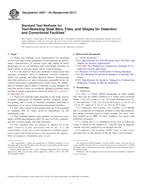
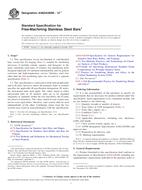 ASTM A582/A582M-12e1..
ASTM A582/A582M-12e1..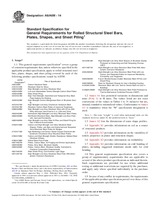 ASTM A6/A6M-14
ASTM A6/A6M-14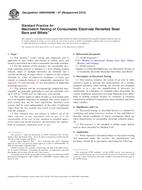 ASTM A604/A604M-07(2..
ASTM A604/A604M-07(2..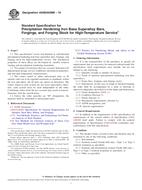 ASTM A638/A638M-10..
ASTM A638/A638M-10..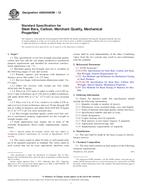 ASTM A663/A663M-12..
ASTM A663/A663M-12..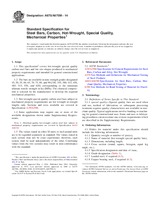 ASTM A675/A675M-14..
ASTM A675/A675M-14..
 Cookies
Cookies
